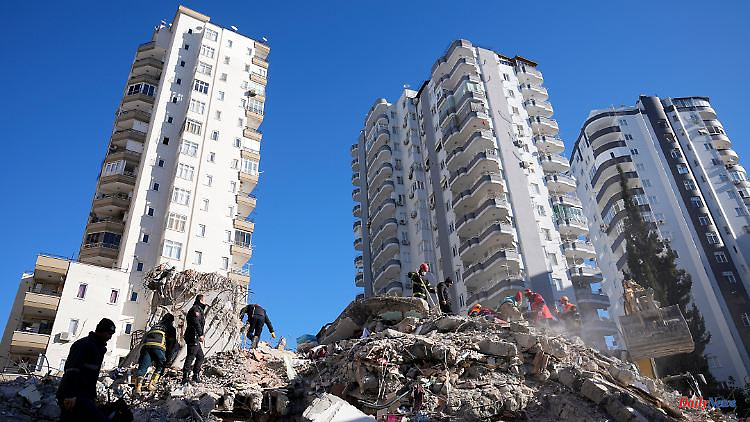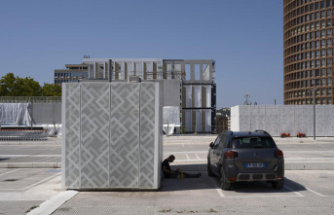The death toll from the earthquake in south-eastern Turkey is now in the thousands. It is one of the most devastating earthquakes in the region in recent decades. What made it so deadly? Researchers cite a number of reasons.
The region on the border between Turkey and Syria will be devastated by a 7.7 to 7.8 magnitude earthquake on Monday morning. The preliminary balance is devastating: According to the latest information, the number of dead is now around 5,000 and more than 23,500 people were injured. According to the Turkish civil protection agency Afad, 5,775 buildings were destroyed in Turkey alone. It is the most serious earthquake in the region for more than 20 years. But why was it so deadly?
In Turkey and the neighboring countries, violent earthquakes occur again and again, sometimes killing hundreds or thousands of people. The reason is two large seismically active zones that run through Turkey: In the north, the North Anatolian Fault, where a severe earthquake occurred in 1999 southeast of Istanbul, killing more than 17,000 people. It is the last most active earthquake zone in Turkey.
However, the current earthquake occurred in the second danger zone, the East Anatolian Fault, which has been comparatively quiet for the past 100 years. There, too, in the south-east of Turkey, two continental plates meet: the Arabian Plate and the Anatolian Plate. Both move sideways past each other at a speed of about 1.4 centimeters per year. The plates get stuck again and again. If the pent-up energy is released, earthquakes occur.
However, there has not been an earthquake as severe as the most recent one on the East Anatolian Fault for a long time: the last time the earth shook there was on November 29, 1114, with a magnitude of 7.8. There were other severe earthquakes in 1513 and 1893. In the past century, however, only one severe earthquake with a magnitude of 6.8 was measured there, on December 4, 1905. Tension has therefore built up in this area over a long period of time, according to in a communication from the German Research Center for Geosciences (GFZ). It was therefore "only a matter of time" before an earthquake like the current one would occur.
And the energy of the quake now released was tremendous: about 250 times the magnitude of the 6.2 magnitude quake in August 2016 in central Italy, which killed nearly 300 people. The scale used to measure earthquake magnitude is logarithmic: an increase in magnitude - the unit of measurement - means a tenfold increase in the vibration recorded by seismographs, but about a thirtyfold increase in the energy released.
"The higher magnitude and energy released means that a much larger area is affected," Joanna Faure Walker, director of the UK's UCL Institute for Risk and Disaster Reduction, told the Science Media Center (SMC). But the deadly consequences of an earthquake depended not only on the energy released, but also on the number of people in the affected area and on the quality and construction of the buildings.
Experts assume that collapsing buildings, in particular, cause many deaths in earthquakes. The Turkish government therefore passed a law in 2004 that all buildings must meet modern earthquake-proof standards. "Following the recent event, it will be important to verify that all buildings constructed since then have complied," Walker said.
"The photos show that some of the collapsed buildings may have been built before the advent of modern seismic standards and are therefore not designed and suitable for an earthquake of this magnitude," Mohammad Kashani, professor of civil and seismic engineering at the University of Southampton, told the SMC . On the Syrian side in particular, years of civil war could have weakened the buildings, Bill McGuire, professor emeritus of geosciences at British UCL, told the SMC.
Kashani draws attention to another factor that appears to have been one of the reasons why the quake was so destructive: the shallow depth of the tremor. Because the quake was only about 18 kilometers below the surface. And the closer an earthquake of the same magnitude is to the earth's surface, the more it vibrates. "The combination of large magnitude and shallow depth made this earthquake extremely destructive," Kashani said.
And the danger may not yet be averted: "The magnitude of the aftershocks, which may decrease in strength but could persist for days, poses the risk that buildings already weakened by the previous tremors will collapse," warns David Rothery, Professor of Planetary Earth Sciences at the UK Open University versus the SMC. This could endanger residents as well as the helpers.












